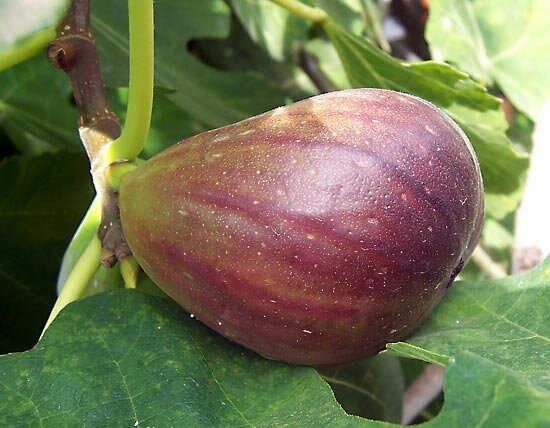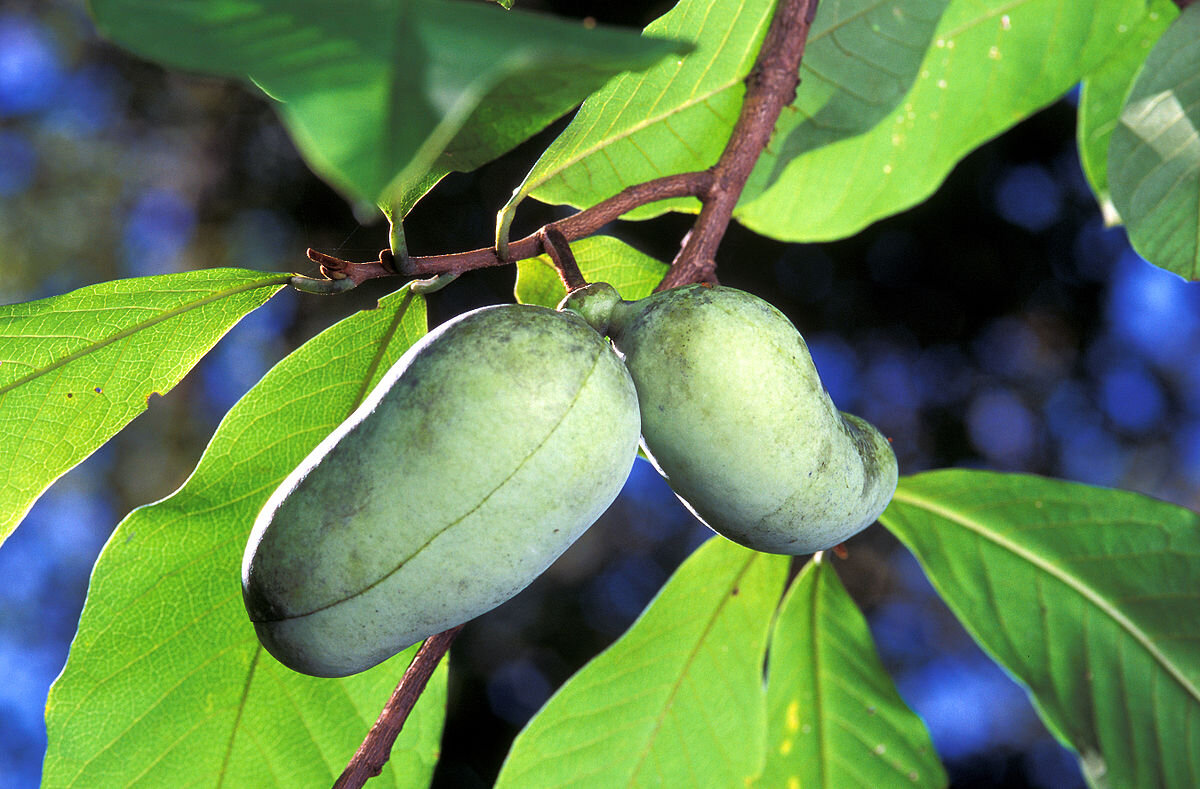Welcome to my Food Forest where I grow an number of fruits in the Bee Better Teaching Garden. Information in this fruit series is based on knowledge I’ve gained growing in hardiness zone 7b, in Raleigh, North Carolina. Helen Yoest
Hardy Kiwi, Actinidia arguta, PC John Buettner
Kind:
Latin Name: Hardy Kiwi
Common Name: Actinidia arguta
Type: Deciduous vine
Height: : 25 to 30 feet, in its native region, the vine can reach up 100 feet!
Spread: 7 to 20 feet
Pollination: Species plants are dioecious, separate male and female plants, with at least one male pollinator needed for fruit set on female vines.
Fruit Health Benefits: The kiwiberry is considered an excellent source of vitamin C, vitamin B8 (myo-inositol), lutein, β-carotene, chlorophylls, enzyme actinidin, and antioxidants, as well as dietary fiber.
Wildlife Benefits: Coming soon!
Origin of species: Temperate eastern Asia, Native to woodlands, mountain forests, stream-sides and moist locations in eastern Asia, China and Japan.
Cultivars: We grow A. arguta ‘Issai’, which only reaches heights of 12 to 20 feet and 3 to 5 feet wide. During planting, we plant three plants—a male, a female, and a self pollinating ‘Issai’. This is the first year we have flowers.
Male flower in the Bee Better Teaching garden. First time for these flowers. Still no female flowers.
I consulted my friend, John Buettner to determining the sex of the flower. At first I thought it was a male flower, but he was able to zoom in to realize it is a female flower, “it has both the boy parts and the girl parts. Male flowers have only the boy parts. Though female flowers have both parts, in most varieties the boy parts are inactive and don't pollinate anything. If you are growing 'Issai', it is self fertile, meaning on the female flowers both parts are fully functional. There may be other varieties that are self fertile, its the only one I know.”
Male vs Female hardy kiwi flowers
To know if your hardy kiwi vine is male or female, look to the flower, if you have any Here is a pic of the difference between male and female flowers.
Culture Information:
Sun: Full sun
Water: Medium
Zone: 3 to 8
Years to bear fruit: The age of the plants has an impact on fruiting. Hardy Kiwi takes a few years to produce fruit. Depending on the age of the vines you purchase, it could be one to three years before fruit is made
Harvest Time: Fall
Care:
Plant: Grow hardy kiwi vines 12 feet apart on well-drained, fertile soil, in full sun. Ideally plant on an east facing slope so flowers don't develop too quickly in spring and get subjected to late frosts. These vines love to grow. In fact, some consider them invasive further South.
Fertilizer/pH: Hardy kiwi likes it on the acidic side with a pH between 5 and 6.5.
Additional fertilizer not required with good soil, covered with organic compost. The compost will break down to nature the vine.
Mulch: Composted leaf mulch, wood chips, pinestraw.
Groom/Prune: Hardy kiwi is an aggressive vine. Feel free to prune back any time to manage size.; best to cut back when dormant during the winter.
Pest/disease Control: No serious disease or insect problems
Propagation: In areas where the kiwifruit will grow, scions of the hardy kiwi can be grafted directly onto kiwifruit rootstock. Otherwise, one must either root their own from hardwood or greenwood cuttings or buy established plants.
Comments:
It tastes similar to, though slightly sweeter than, its larger-fruited relative, the true kiwi, Actinidia deliciosa, which can not be grown north of Zone 8.
The following first appeared in Triangle Gardener a few years back, by Helen Yoest
As a budding fruit grower with limited space, I’m very careful as to how I use my real estate. Since I’m also a wildlife gardener, none of my fruit can be sprayed; everything has to be disease resistant, or with problems the garden and I can tolerate.
The latest addition to my garden is the hardy kiwi. This kiwi is much different in appearance from the traditional fuzzy kiwi.
Hardy kiwi is sweeter, grape-sized, and fuzz-less.
Since I’m so new at growing hardy kiwi, and frankly I didn’t know it existed before visiting my friend John Buettner’s garden, I reached out to John to share his expertise.
Hardy kiwi is an excellent choice for Triangle gardens. The vine is attractive, not fussy, and grows fast. Maybe too fast. According to John, “My only rule about kiwi vines is that you never go near them without pruners. They will take over the world if you let them ramble.”
Give it a lot of space. Hardy kiwi can grow 15-feet in one year. Try growing it over an arbor in a sunny location.
Fussiness is a term often used to suggest high maintenance, including spraying and feeding. Kiwis are not fussy. As John attests, “I have never sprayed my kiwi vines. Occasionally I will see some foliar disease and sometimes the fruit gets what appears to be sunburned on its skin, but those problems are very minor and not worth spraying.” John added, “I also don’t feed them a lot, maybe once a year when I’m feeding everything else in the garden. I use wood chips as the mulch under the vines, and it breaks down into compost which gives them a slow feeding over time.”
Hardy Kiwi takes time to produce fruit. I don’t expect to see any fruit from my fledgling plants for three to five years, or more! But it will be worth it.
Like many fruits, hardy kiwi needs full sun and constant moisture to thrive, though it does not tolerate wet soil. Plant it in a full sun location with rich, well-drained soil. It will suffer in times of drought unless watered. Deer may browse the vine, but will soon it will be out of the deer’s reach.
For my hardy kiwi, I built a trellis from limbs after removing a crape myrtle tree. Soon it will be covered, creating a beautiful display on the south side of my garden.
Hardy kiwi fruit will reach full-size by midsummer, but will not ripen to its full sweetness until late summer. To test, pick a few and allow them to ripen on a counter or on a windowsill for a few days. If the kiwi becomes sweet and soft, it’s time to harvest.
Hardy Kiwi vine trellis in the Bee Better Naturally with Helen Yoest garden
To extend the harvest, store hardy kiwi in the refrigerator to keep them from ripening. Take out of the fridge to ripen as needed. In addition, hardy kiwis can be picked and eaten straight off the vine. Another tip from John, “They are sweeter if you wait until the fruit starts to wrinkle.”
Most hardy kiwis need a pollinator so I asked John about the ‘Issai” vines, known to be self-fertile, and do not require a male pollinator. “I did get a good crop of fruit from them,” John says. Even with this advice, I bought one self-fertile ‘Issai’, and a male and female just to be certain
John’s garden has five hardy kiwi vines: two female Actinidia arguta ‘Annas’, one male A. arguta of unknown variety and one A. purpurea ‘Ken’s Red’. I’m growing Actinide arguta.
If you too are a budding or hopeful fruit grower, starting with hardy kiwi is a good place to begin.
Naturally,
Helen




















































